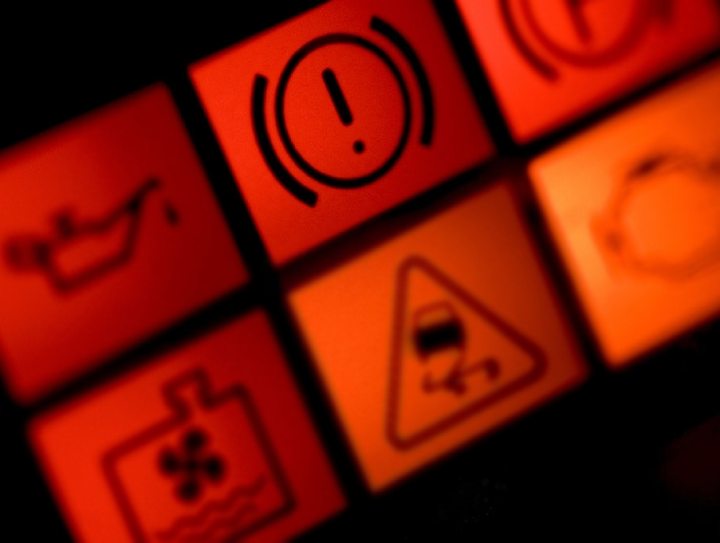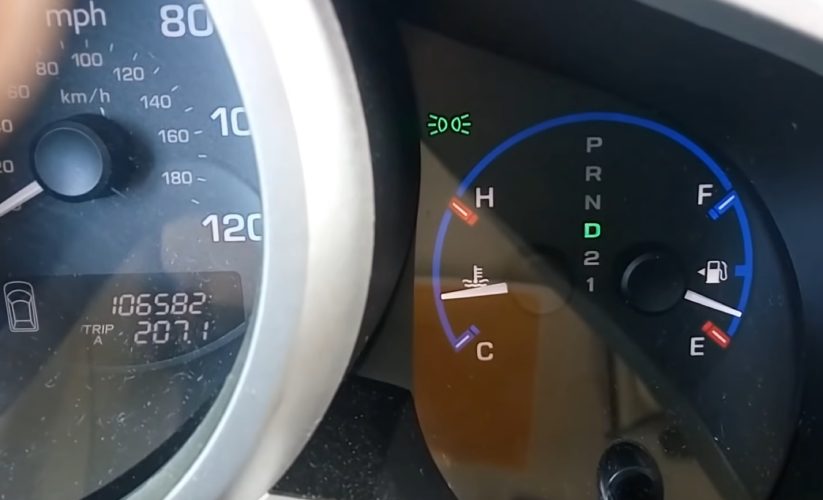Your car has multiple sensors monitoring and ensuring all the systems are running as intended. Your brake light will turn on whenever there is a problem with your braking system, while the battery light will tell you there is a battery charging problem.
What does it mean when both warning lights turn on at the same time?
When the battery light and the brake lights come on simultaneously, there is a high chance that your alternator is starting to fail. While it may still charge the battery, it might not be charging at the required voltage of at least 13 volts.
Other possibilities include a fault with your braking system resulting in increased power consumption, a loose connection, or a faulty voltage regulator.

4 possible reasons why your battery and brake lights are on
I will cover in detail four main reasons that could cause your car to throw out these two warning lights simultaneously.
1. Failing alternator
From my experience, whenever a customer comes in with his car having this problem, in most cases, it will be a faulty alternator causing the issue.
While you can test and diagnose the problem at home, I always recommend getting your car to a specialist as he will have the tools and knowledge required to fix it.
However, I put together a short guide on how you can test your alternator at home using a voltmeter or a multimeter.
How to test your alternator?
While it might seem like a difficult task to someone with not enough knowledge, testing your alternator can be really easy.
It is important to note that some alternators’ output will vary between 13 volts – 15.5 volts, depending on the car model.
Follow the steps listed below and you will be able to tell if you have a faulty alternator.
- Get your hands on a voltmeter
- Ensure your batterie’s terminals are clean
- Connect the voltmeter to the battery terminals
- You should be getting a reading of 12.5v – 12.8v while the engine is off
- Now start the engine and check for higher readings, ideally over 13 – 13.5v
- Turn on your radio, headlights and other electric components
- Your should be getting around the same reading as before
- A lower reading will indicate that your alternator is undercharging the battery
- A higher reading will indicate that your alternator is overcharging the battery
- If the readings are off, I recommend visiting a car mechanic for a proper diagnostic.
Will my car run with a bad alternator?
The short answer is: “it depends.” An alternator can overcharge, undercharge or not work at all. In any of these scenarios, you will be able to drive your car for short distances until your car battery gets depleted.
If the alternator is undercharging, the battery will slowly lose power until your car stalls. If the alternator is overcharging – usually to a bad regulator -, your battery cells will get damaged, and most likely your battery fuse will blow out.
When the alternator stops working, your battery will use whatever charge it has, and then the car will stall. Even if you jump-start your vehicle, it will die soon without electric power pumped into the battery.
How much does it cost to get it fixed?
As with other parts of the car, the cost of replacing an alternator will vary depending on the car’s age, model, and make. However, be prepared to spend at least $250 on the part itself and another $200 for labor.
2. Failing voltage regulator
Having worked as a mechanic for so many years, I have encountered all sorts of problems with peoples’ trucks. On some cars, the battery and brake lights were flashing just for a few seconds at a time.
It turned out to be a failing voltage regulator. In short, a voltage regulator ensures that the maximum voltage going through your car’s circuit is the same.
A failing regulator will either overload or underload your alternator, resulting in your car’s systems not functioning correctly.
This could explain why you might see the battery light on, which indicates an issue with your charging system, as well as the brake light, which means a fault with your braking system – wrong voltage.
If you would like to read more about signs of a failing regulator and the cost of replacing it, you can check out my article about possible reasons for your battery light to come on while driving.
3. Loose connection or damaged wiring
A loose connection or a faulty wire will make your ECU report a possible fault with your brake and charging systems simultaneously.
As wires will degrade as they age, it is worth checking your wire harness from the battery. A damaged wire or a loose connection can cause a short and damage your car’s components.
It would help if you also made sure that the terminals of your battery were clean and the connectors were tightened.
4. Faulty braking system
Although rare, there is a possibility that your braking system has an electric issue, causing the battery light to turn on too.
If every scenario discussed above fails, I recommend checking your brake lines’ wiring and ensure they are not damaged.
What should you do when these warning lights come on?
If your battery and brake warning lights turn on while driving, the first thing you should do is safely pull over for a quick inspection of your car.
Once you have safely stopped, turn off the engine and have a look under the hood for any leaks or see if you can notice a smell of burning wires. A burning smell will usually indicate a broken alternator.
You might want to also check your brake fluid level, as having a low level will display a brake light on the dashboard.
You should also check for any loose connections on your battery, and at the same time ensure the terminals are not corroded.
If everything seems fine, it is essential that you drive the car home or to a garage before you find and fix the issue.
Can you drive with the brake and battery lights on?
Under no circumstance should you be driving your car with these warning lights on your dashboard.
The car is telling you there is a problem with the charging and braking systems. Therefore you should seek advice from a specialist.
By driving the car before getting it fixed, you put yourself and other traffic participants at risk.
Conclusion
If you find yourself in a situation where any of your warning lights come on, do not panic. Find a safe spot where you can pull over and inspect your car.
Following a visual check, if everything seems fine, restart the car.
Even if the lights disappear after restarting the engine, it is still recommended to have the issue investigated by a car mechanic.
The main thing to keep in mind is that the warning lights turn on for a reason, and you should never ignore them or keep driving your car.
Every since I was a little boy, I can remember spending the afternoons in my dad’s repair shop. I got my first car at 16 and it was the best feeling ever!
I have contributed to various automotive publications but decided it’s finally time to settle for something constant.









